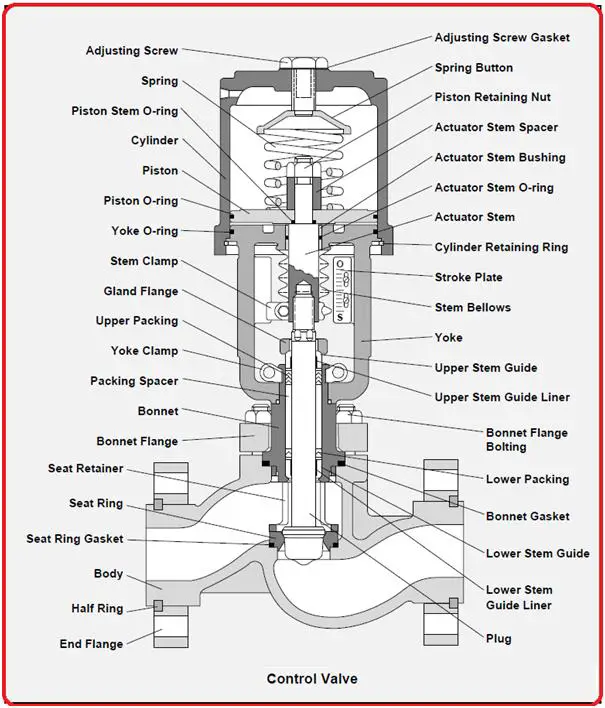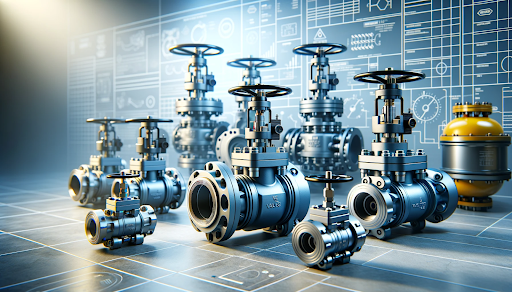Exploring the Performance of Modern Control Valves in Industrial Applications
Exploring the Performance of Modern Control Valves in Industrial Applications
Blog Article

Maximize Power Financial Savings and Comfort With Advanced Building Automation Controls
In the world of modern-day design and facility administration, the integration of innovative structure automation manages stands as an essential innovation. The merging of innovation and sustainability has birthed a brand-new era where power effectiveness, convenience optimization, and operational streamlining are no much longer attainable truths however far-off aspirations. By taking advantage of the power of automation, buildings can adapt, respond, and advance in manner ins which were as soon as inconceivable. The possibility for substantial energy cost savings and enhanced comfort is not simply a promise but a possibility waiting to be satisfied. This standard shift in structure monitoring holds the vital to unlocking a globe where environmental conscientiousness and owner health sympathetically coexist within the walls of our structures.
Energy Performance Advantages
Energy performance advantages can considerably decrease energy consumption and functional expenses in buildings. By applying energy-efficient practices and modern technologies, structure owners and drivers can accomplish substantial financial savings while likewise contributing to environmental sustainability. Among the primary benefits of boosting energy performance in buildings is the reduction of energy costs. Energy-efficient systems, such as advanced building automation controls, can enhance making use of sources like cooling, home heating, and lights, bring about reduced power expenditures in time.
In addition, improved power efficiency can extend the life expectancy of structure tools and systems. By running a lot more successfully, HVAC systems, lighting components, and various other building parts experience less deterioration, resulting in minimized upkeep and replacement costs. Additionally, energy-efficient structures typically command greater residential property values and rental rates, offering lasting monetary advantages to owners.
Additionally, energy performance can boost resident convenience and productivity. Appropriately managed interior atmospheres with optimum lights and thermal problems create a more favorable and positive workspace, leading to improved staff member complete satisfaction and efficiency. Generally, the energy efficiency benefits related to innovative structure automation controls are complex, including expense financial savings, environmental stewardship, and passenger health.
Enhanced Comfort Control
Enhancing comfort control in building settings needs a sophisticated assimilation of advanced automation systems for ideal owner wellness. By using innovative structure automation controls, facilities can customize the indoor atmosphere to satisfy the certain requirements and choices of occupants. These systems allow accurate policy of illumination, air flow, and temperature level, developing a effective and comfortable ambience. Passenger complete satisfaction and performance are very closely linked to thermal comfort, making it vital to have systems in position that can adjust to transforming problems in real-time.
By incorporating these innovative controls, structures can not just enhance convenience but also boost power effectiveness by enhancing system operations based on real tenancy and use patterns. Ultimately, focusing on owner convenience via innovative automation systems leads to an extra pleasurable and much healthier interior setting.
Functional Performance Improvements

In addition, the implementation of real-time surveillance and analytics devices allows building operators to determine energy ineffectiveness and functional abnormalities without delay. By constantly keeping an eye on energy usage patterns and system efficiency metrics, changes can be made in real-time to optimize power intake and ensure peak operational performance. control valves. Furthermore, integrating demand action methods into structure automation controls can even more improve functional performance by dynamically readjusting power use based upon grid problems and rates signals
Indoor Environment Optimization
Reliable interior environment optimization is a basic element of structure automation controls, guaranteeing residents' convenience and well-being while making the most of power financial savings. By making use of advanced sensors and controls, constructing automation systems can continuously monitor and adjust temperature, humidity degrees, air top quality, and air flow to produce an ideal interior environment. Preserving comfortable and consistent conditions not just boosts resident contentment however likewise improves performance and general health.
Interior environment optimization also plays an important role in energy effectiveness. By fine-tuning home heating, air flow, this content and air conditioning systems based upon real-time information and tenancy patterns, constructing automation controls can considerably reduce energy intake - control valves. Carrying out strategies such as top article demand-controlled ventilation and thermal zoning can help decrease energy waste while making sure that each location of the building gets the needed conditioning.

Lasting Atmosphere Production
Structure automation manages not just maximize indoor environment problems for power performance and resident convenience but additionally lay the foundation for developing a lasting atmosphere via critical management of systems and resources. By incorporating sophisticated structure automation modern technologies, such as sensing units, actuators, and intelligent software program, centers can check and adjust power use in real-time to minimize waste and decrease their carbon footprint. These systems make it possible for predictive upkeep, determining possible concerns prior to they intensify and maximizing equipment efficiency to improve long life and effectiveness.
Additionally, sustainable atmosphere creation extends past energy administration to encompass water conservation, waste reduction, and interior air quality improvement. Structure automation controls can control water use, detect leaks, and ensure correct garbage disposal practices, adding to overall sustainability efforts. Furthermore, by checking and controlling air flow and purification he has a good point systems, these modern technologies improve occupant health and efficiency while reducing energy intake connected with cooling and heating procedures.
Verdict
Finally, progressed structure automation manages deal substantial advantages in terms of energy cost savings, comfort control, operational performance, indoor climate optimization, and creating a sustainable setting. By executing these controls, structures can attain optimum performance while minimizing power consumption and enhancing resident convenience. It is obvious that using sophisticated automation technology is essential in improving structure performance and creating a more lasting future.
Energy effectiveness advantages can significantly minimize power consumption and functional expenses in buildings. Overall, the energy efficiency advantages linked with sophisticated structure automation controls are complex, including price financial savings, ecological stewardship, and owner wellness.
Furthermore, including need action approaches into structure automation controls can further boost functional performance by dynamically adjusting energy usage based on grid problems and prices signals.
Structure automation controls not just maximize interior environment conditions for energy efficiency and resident convenience however also lay the foundation for creating a lasting atmosphere via critical administration of systems and resources.In final thought, progressed building automation controls deal substantial benefits in terms of energy financial savings, comfort control, functional effectiveness, interior environment optimization, and developing a sustainable environment.
Report this page